
When you fart in the bathroom, the noise seems extra loud because hard surfaces like tile, porcelain, and glass reflect sound instead of absorbing it. In a small, enclosed space, these strong reflections cause sound to bounce rapidly, making every noise seem louder. There isn’t much fabric or soft material to dampen the echo, so the sound becomes sharper and stands out more. If you’re curious, there are actually ways to make that echo quieter and less embarrassing.
The Science of Sound Waves

Sound waves travel through the air as vibrations, bouncing off surfaces and changing direction.
When you pass gas, those vibrations produce sound waves with a unique frequency, influenced by pressure and body shape.
As the waves move, they interact, sometimes combining to make the sound louder or canceling each other to make it quieter.
The way these waves interact affects the sound you hear.
Knowing this helps explain why some noises—like farts—can sound louder, sharper, or more echoey depending on where you are.
Bathroom Surfaces and Sound Reflection
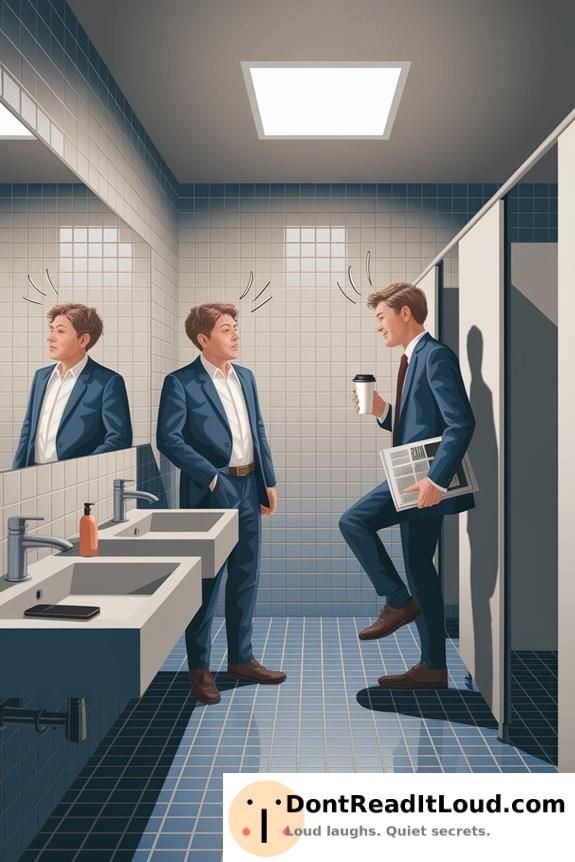
Because bathrooms usually have hard, flat surfaces like tiles, mirrors, and porcelain, they don’t absorb much noise.
Instead, these materials bounce sound waves around the room. When you let out a fart, the sound reflects off the walls, floor, and fixtures, making it stand out more.
Soft materials like carpet, curtains, or padded furniture help absorb sound, but those are rarely found in a bathroom.
With little to absorb the noise, every sound travels and echoes. The mix of reflective surfaces and minimal sound absorption makes bathroom noises seem much louder.
Why Small Spaces Make Big Sounds

When you’re in a small bathroom, noises seem much louder than they do in bigger rooms.
That’s because spatial acoustics play a big part in how we hear sounds. In tight spaces, sound waves have little distance to travel and quickly reflect off walls, floors, and ceilings. These rapid echoes make even quiet noises seem much stronger.
In contrast, open areas let sound spread and fade away. Small bathrooms trap and focus sound waves, making them more noticeable.
The Role of Tiles, Porcelain, and Glass
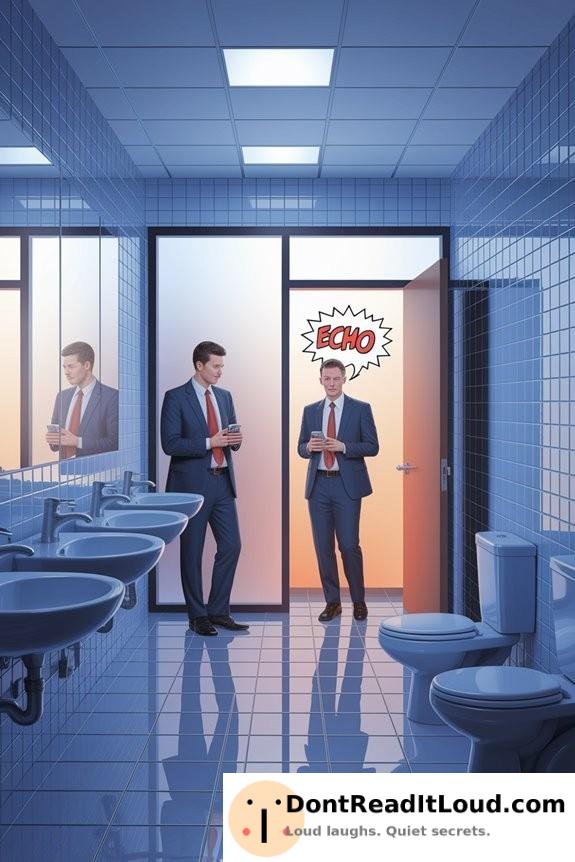
Hard bathroom surfaces don’t just trap noise—they bounce it around.
When you let one rip, sound waves hit tile, porcelain, and glass, which are common in bathrooms. These materials reflect sound rather than absorb it, making even small noises seem louder and sharper.
Tile can scatter sound, but its hardness still creates strong echoes. Porcelain surfaces, like toilets and sinks, are excellent at reflecting sound.
Glass on mirrors or shower doors amplifies every little noise, making the space even more echo-prone.
Air Pressure and Sound Amplification
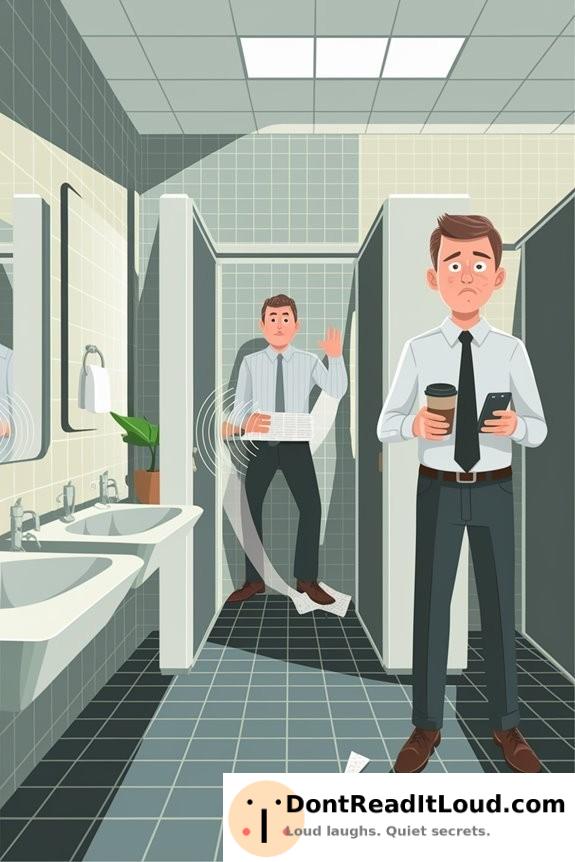
Although it mightn’t be obvious, the air pressure inside a bathroom plays a big role in how sound travels. When you release a fart, the sound waves move through the air, and the air density in a small, enclosed bathroom is usually higher than in open spaces.
This increased density helps sound waves move more effectively, making those distinctive noises sound louder. The hard surfaces cause the sound to reflect and echo, which sharpens and intensifies the sound even more.
You mightn’t notice it elsewhere, but in a bathroom, you’ll definitely hear the difference.
Comparing Bathroom Acoustics to Other Rooms
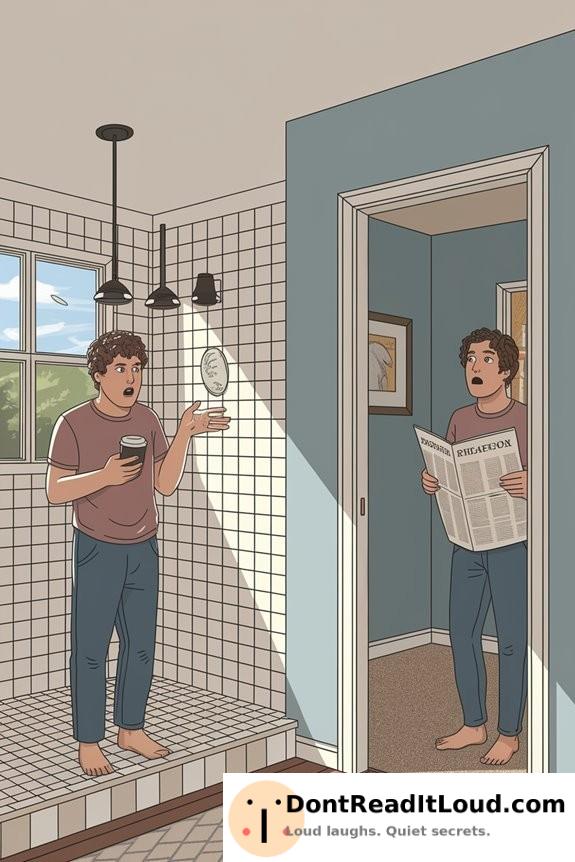
Because bathrooms have tile, porcelain, and other reflective surfaces, their acoustics differ drastically from rooms with carpet, curtains, or soft furniture.
When you enter a bathroom, you’ll notice sounds bouncing off the walls. That’s due to the hard, smooth materials found in most bathrooms, which reflect sound instead of absorbing it.
In contrast, living rooms and bedrooms are filled with items that soak up noise, like rugs and upholstered chairs. These soft surfaces help quiet the space and reduce echoes.
How Different Farts Create Different Echoes
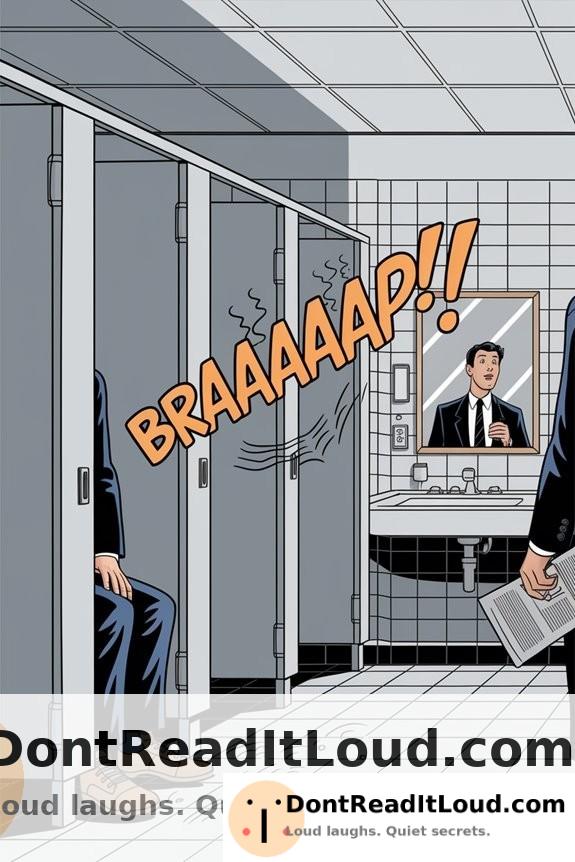
Whether you let out a quick squeak or a deep rumble, the type of fart you produce affects how it echoes in the bathroom.
Loud farts, with their strong bursts of sound, bounce off hard surfaces and create bold, unmistakable echoes that can fill the whole room.
In contrast, silent farts rarely echo at all. Their low volume and lack of sharp sound waves don’t give the acoustics much to amplify.
Sharper or longer sounds produce more noticeable echoes.
Each bathroom visit brings its own unique acoustic twist, depending on your fart.
Can You Reduce the Echo?
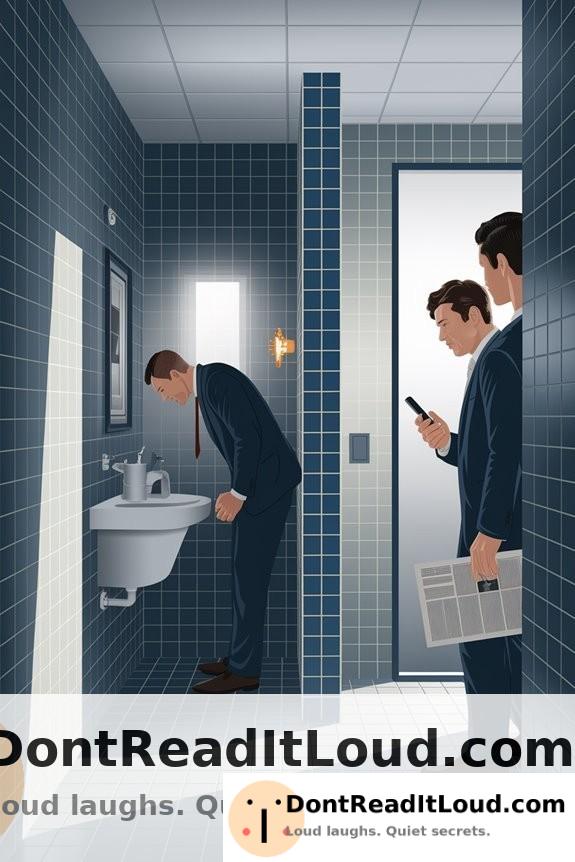
Ever wonder if you can actually do something about that unmistakable bathroom echo? You’ve got options.
The main culprit is hard surfaces, which bounce sound around. To fight back, add sound-dampening materials. Rugs, towels, or a fabric shower curtain will help absorb those stray sound waves.
Want more impact? Try acoustic panels—these are made to soak up noise. Mount them above the toilet or on the bathroom walls. Even just a few panels can make a noticeable difference.
Breaking up bare surfaces helps control the echo and improves your bathroom’s acoustics.
Conclusion
When you hear your fart echo in the bathroom, it’s because sound waves bounce off hard surfaces like tiles and porcelain. The small size of most bathrooms means noise doesn’t have anywhere to go, so sounds seem louder and more intense. Adding soft mats or towels can help reduce echoes, though you might still get a laugh out of it. Bathrooms always manage to keep things interesting!



